Get WELL certified with less cost and more points
Does navigating the air quality requirements for your WELL project feel overwhelming?
Kaiterra makes it easy for you to meet WELL's requirements and earn up to 9 points - all without the need for performance testing.
Reduce costs, streamline compliance, and improve occupant wellbeing—all with less hassle and more impact.

Seen in IWBI HQ, USGBC HQ, and 100+ WELL projects





Meeting WELL’s requirements on air quality can be tough.
Many projects spend too much time and cost on performance testing, without realizing there's a better way.
Say goodbye to performance testing for good.
Kaiterra helps you meet WELL's requirements on air quality with Sensor Data verification, eliminating the need for costly and time-consuming performance testing—along with your stress and headaches.
We also help you secure up to 9 additional optimization points, giving your project a significant boost — from WELL Bronze to Silver, or Silver to Gold —with no extra work on your part!

Why WELL APs all choose Kaiterra
Measure all the parameters WELL requires in A01 Air Quality
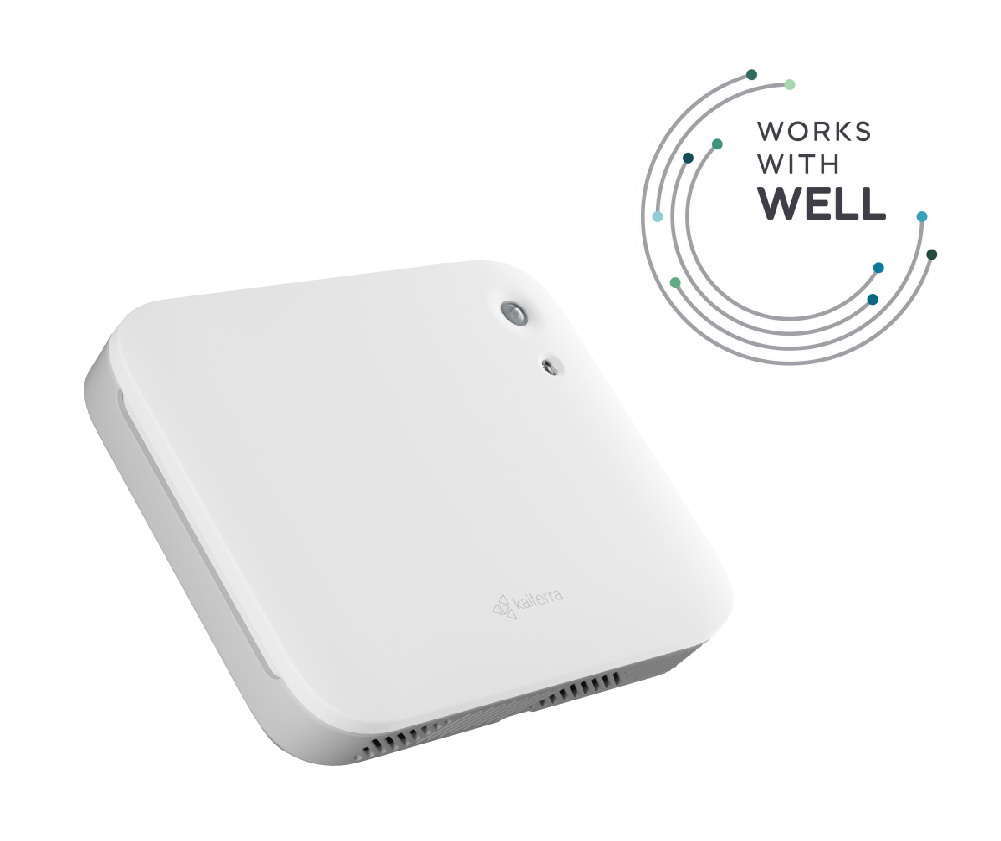
Measure everything WELL requires
Say goodbye to performance tests for good. Kaiterra's air quality monitors provide you with all the parameters you need to meet WELL's requirement in A01 Air Quality - covering PM2.5, PM10, TVOC, CO, O3, and more.
Get up to 9 points, most "Points-for-buck" in one solution
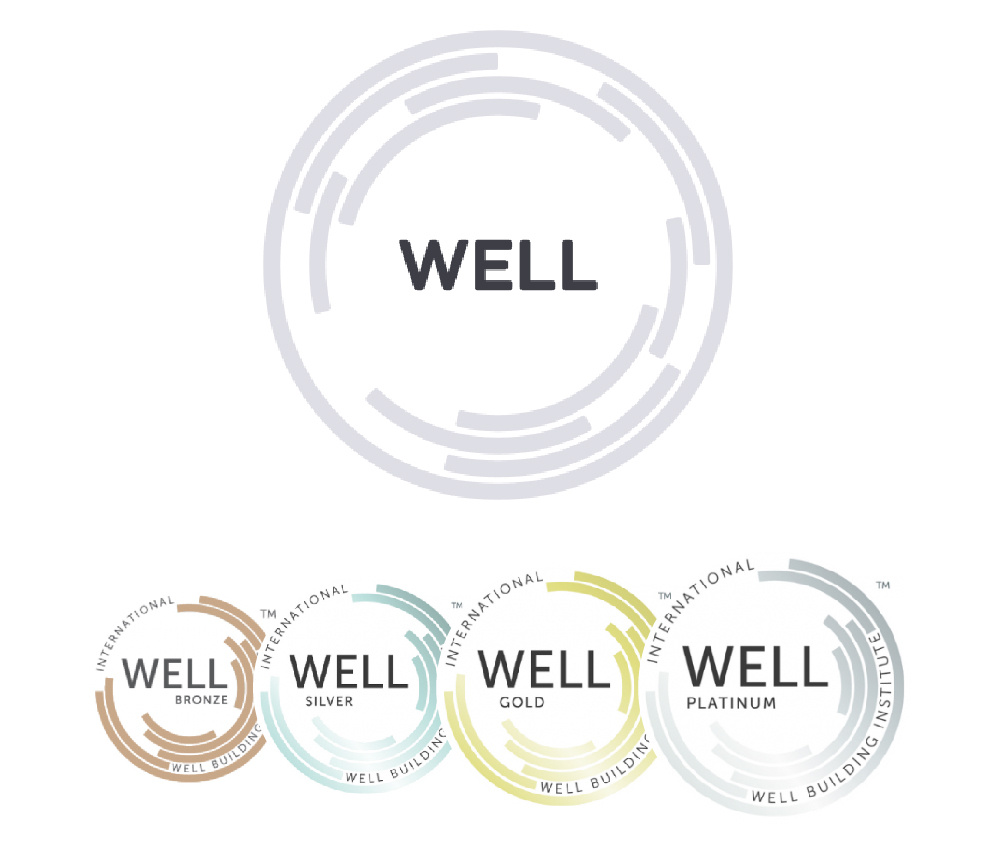
Get up to 9 points, most "Points-for-buck" in one solution
Kaiterra's comprehensive suite of parameters also helps you meet other preconditions such as A03 and T01, and earn additional points in A05, A06, A08, T06, and T07 - totaling 9 points! Taking your project from WELL Bronze to WELL Silver, or Silver to Gold is simpler than ever, with no extra effort or costs.
Check compliance in real-time, no last-minute surprises
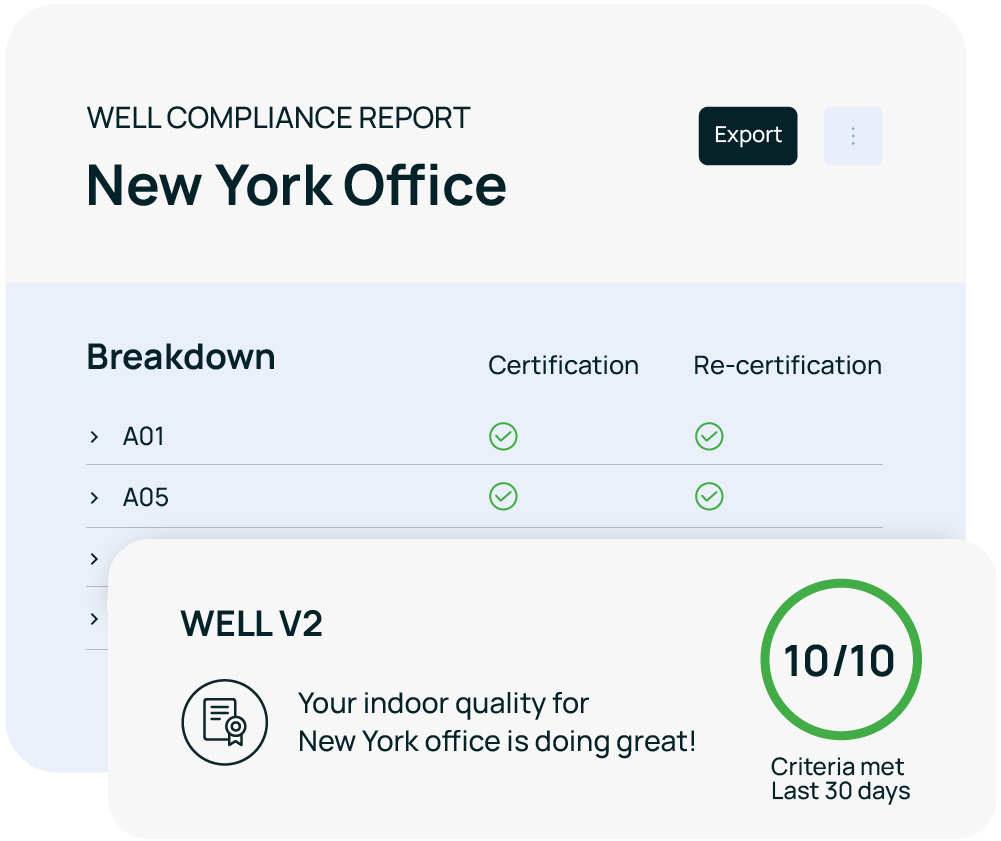
Check compliance in real-time, no last-minute surprises
We all hate last-minute surprises, especially those that cause delays to your WELL project. That's why we offer a real-time compliance report to help run your IAQ data against WELL's air quality thresholds. This helps you discover risk areas faster, avoid project delays, and increase stakeholder's confidence.
Annual data submission is now a breeze
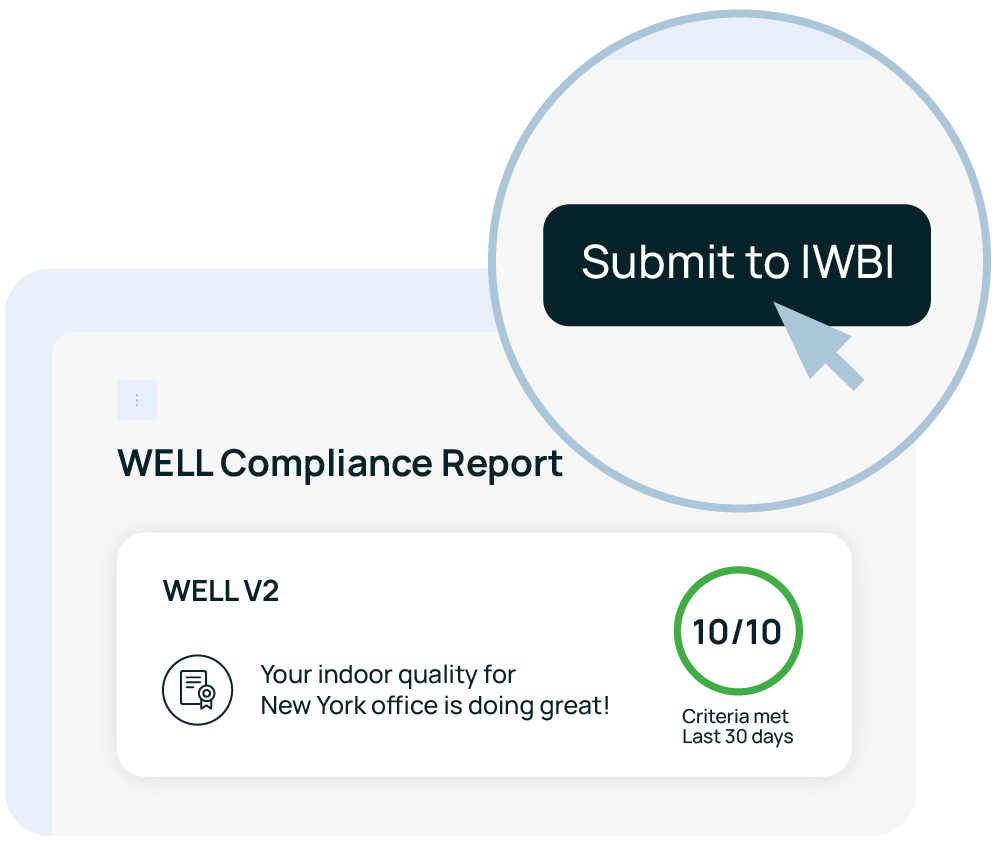
Annual data submission is now a breeze
Want to save 100+ hours on data prep? Try our one-click export feature, built to help busy WELL APs review, consolidate, and format air quality data for WELL submission. Let us handle the grind, so you can reclaim your time and focus on making a bigger impact.
Get a better "Return-on-WELL"
Kaiterra
Performance Testing
✅ $$
No hidden costs
More cost-effective over time
❌ $$$
Many hidden costs such as repeated tests needed, labor costs, and added ops expenses.
✅ Effortless
Kaiterra Sensedge Go can be installed in 46 seconds, with no special labor required. Onboard 50 monitors during a lunch break easily!
❌ Complicated
Scheduling tests, managing testing companies, accompanying testing agents onsite, prepping sites in advance, etc.
✅ One-and-done
Once installed, the system requires nearly no maintenance.
Real-time data is always available for annual submission or recertification.
❌ Yearly grind
To meet the annual data submission requirement, you must conduct testing every year.
✅ Minimal
Reduced risk of delays with real-time compliance reports that identify issues early and help you avoid last-minute surprises.
❌ High
Greater chance of unexpected testing failures and logistical issues, increasing costs and project uncertainty.
✅ Up to 9 points
Meet 3 preconditions
(A01, A03, T01)
Get up to 9 optimization points
(A05 - 3 points, A06 - 2 points, A08 - 2 points, T06 - 1 point, T07 - 1 point)
❌ Up to 4 points
Meet 1 precondition
(A01)
Get up to 4 optimization points
(A05 - 4 points)
✅ Massive
Comprehensive & real-time data
Insights at portfolio & granular levels
Continuous improvements & future-proof
❌ None
Snapshot of air quality
Can only be used for certification
Leverage real-time data to unlock benefits beyond WELL
Identify air quality issues faster
Unlike traditional air quality testing, which provides limited data from a single point-in-time measurement, Kaiterra offers continuous air quality monitoring, giving you detailed insights into how your air quality changes over time.
Kaiterra provides a wide range of out-of-the-box analytic tools and reporting features, allowing you to identify issues, detect malfunctions, and spot areas for improvement earlier and faster before they impact your certification progress.
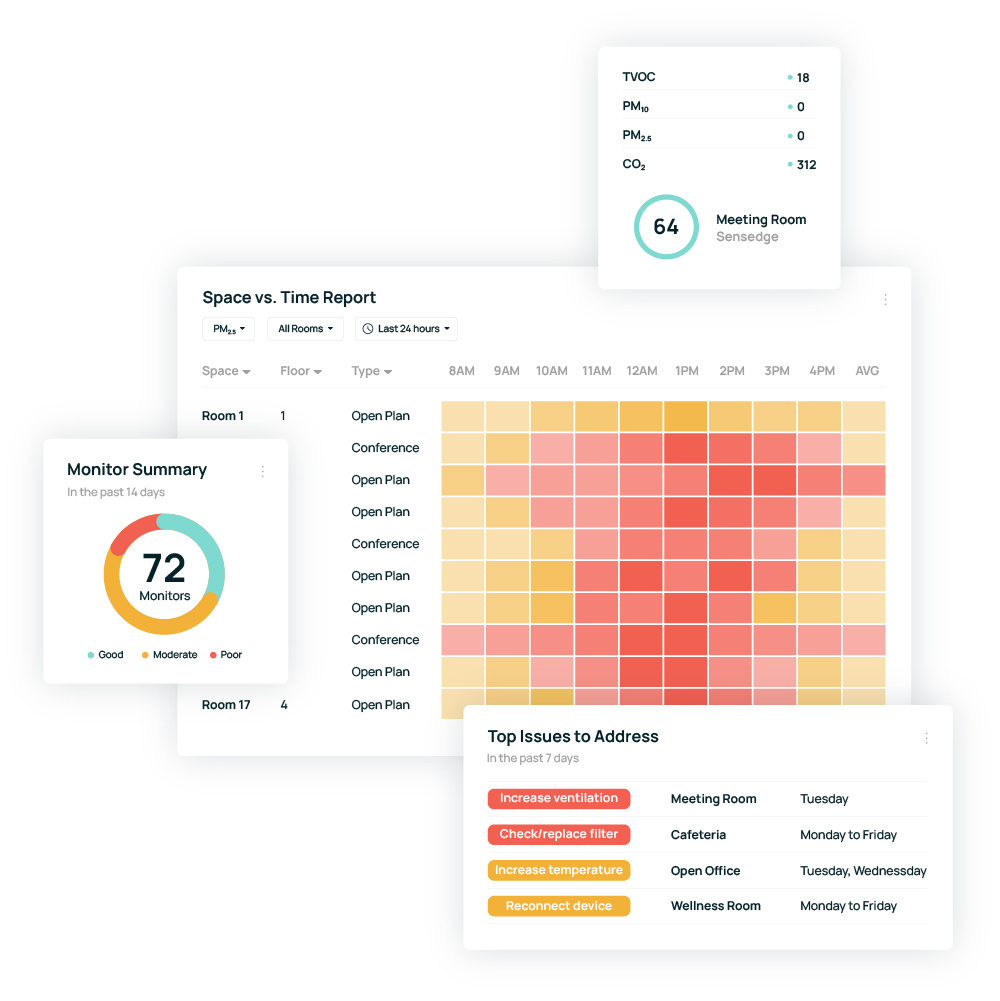
Improve facility operations and building efficiency
Kaiterra’s air quality monitors seamlessly connect with your Building Management System (BMS), enabling you to set up automation and controls based on real-time air quality data.
Integration with an Integrated Workplace Management System (IWMS) is also available, allowing you to unlock additional use cases, such as creating automated work orders to further simplify facility operations.
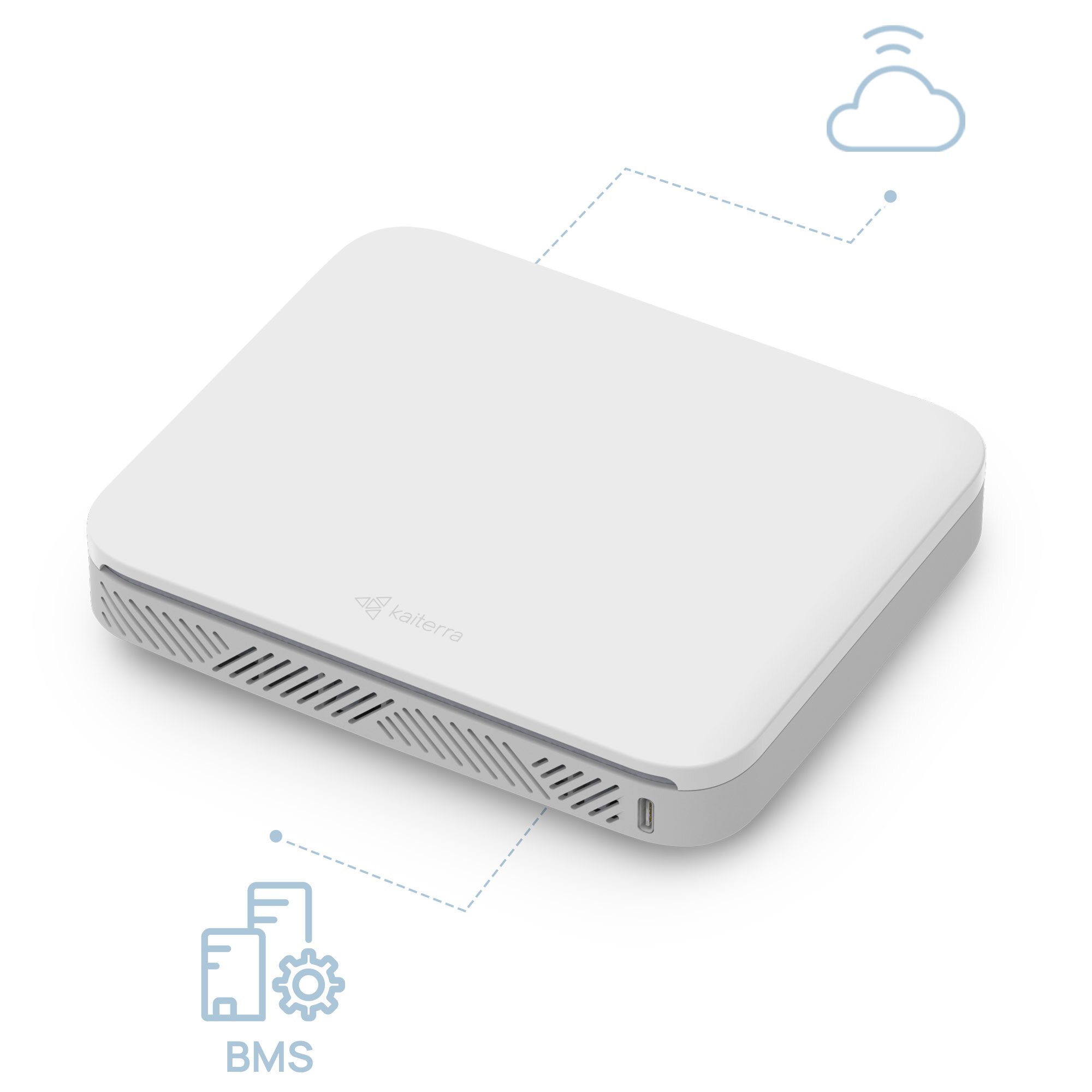
Inform future design, build, and capital decisions
Comprehensive air quality and environmental data offer insights into your space beyond just the air.
Kaiterra’s clients leverage their IAQ and IEQ data to inform space planning, renovations, and future new construction projects.
These insights help workplace teams, architects, engineers, and sustainability professionals with their material selection, space utilization, HVAC design, green leasing, and more.
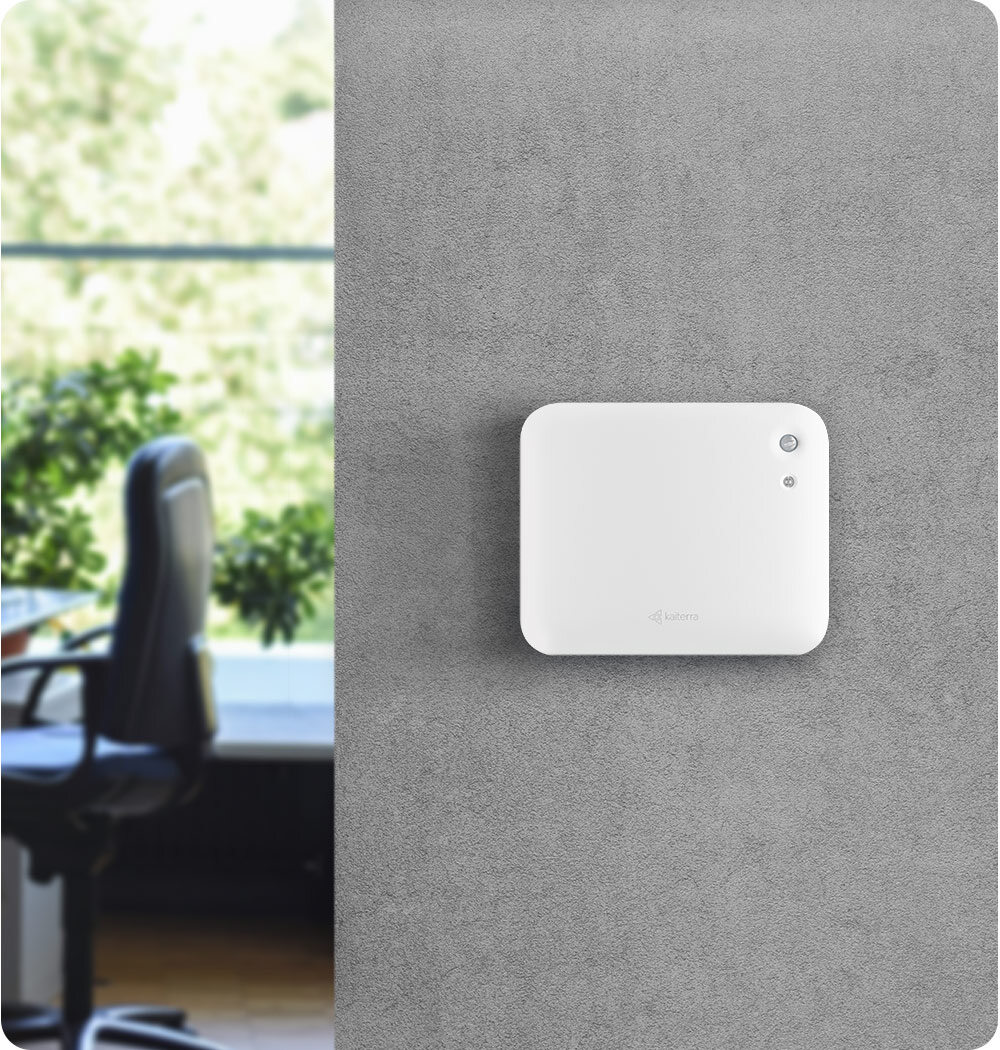
Build a health-centric, future-proof strategy
Wellbeing as a strategy is increasingly prioritized by global companies to boost employee engagement, attract and retain talent, unite stakeholders, and demonstrate leadership.
Beyond WELL certification, significant shifts in the industry—from standards to legislation—are steering us toward a health-centric, data-driven approach.
Real-time air quality data enables you to create a lasting positive impact on occupants, both now and in the years to come.
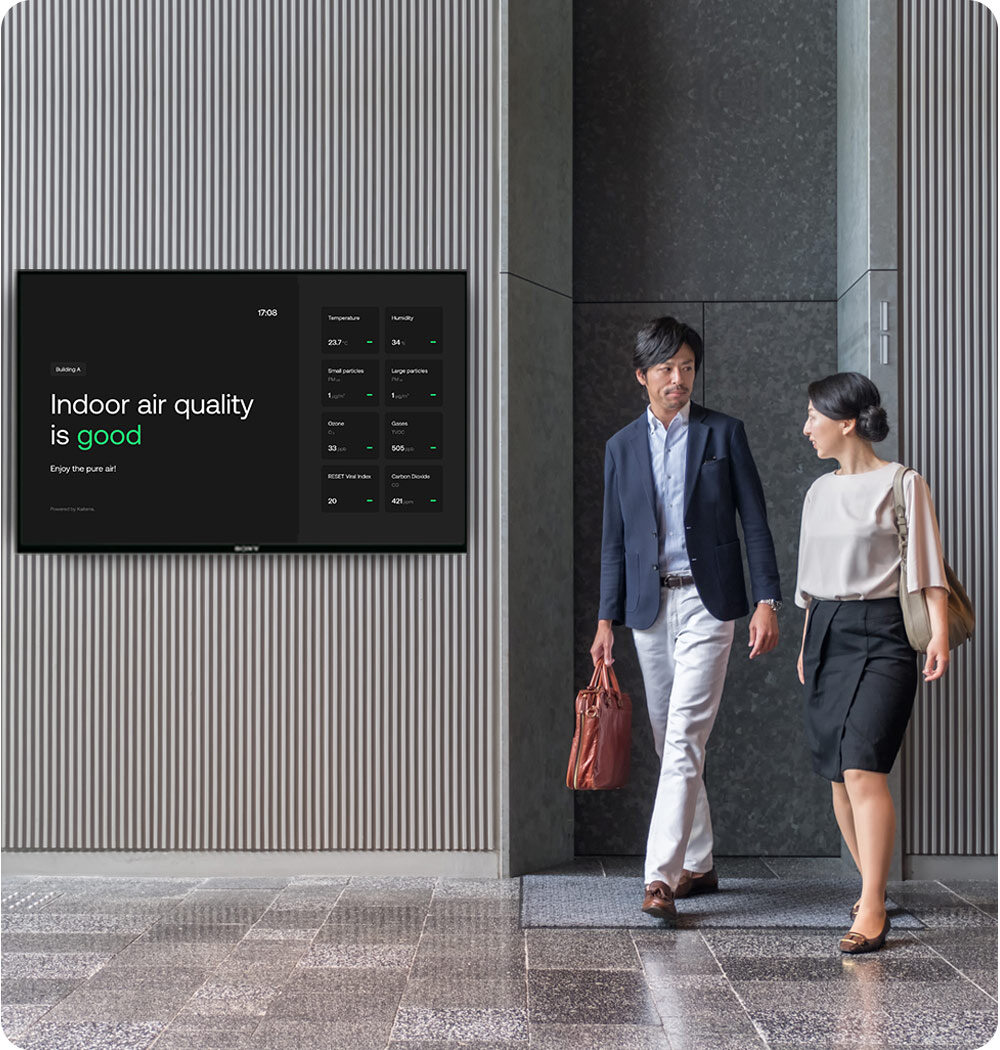

Identify air quality issues faster
Unlike traditional air quality testing, which provides limited data from a single point-in-time measurement, Kaiterra offers continuous air quality monitoring, giving you detailed insights into how your air quality changes over time.
Kaiterra provides a wide range of out-of-the-box analytic tools and reporting features, allowing you to identify issues, detect malfunctions, and spot areas for improvement earlier and faster before they impact your certification progress.

Improve facility operations and building efficiency
Kaiterra’s air quality monitors seamlessly connect with your Building Management System (BMS), enabling you to set up automation and controls based on real-time air quality data.
Integration with an Integrated Workplace Management System (IWMS) is also available, allowing you to unlock additional use cases, such as creating automated work orders to further simplify facility operations.

Inform future design, build, and capital decisions
Comprehensive air quality and environmental data offer insights into your space beyond just the air.
Kaiterra’s clients leverage their IAQ and IEQ data to inform space planning, renovations, and future new construction projects.
These insights help workplace teams, architects, engineers, and sustainability professionals with their material selection, space utilization, HVAC design, green leasing, and more.

Build a health-centric, future-proof strategy
Wellbeing as a strategy is increasingly prioritized by global companies to boost employee engagement, attract and retain talent, unite stakeholders, and demonstrate leadership.
Beyond WELL certification, significant shifts in the industry—from standards to legislation—are steering us toward a health-centric, data-driven approach.
Real-time air quality data enables you to create a lasting positive impact on occupants, both now and in the years to come.
Trusted by global leaders in wellbeing
From global enterprises to prestigious headquarters, we’ve helped WELL projects streamline air quality monitoring, lower costs, and achieve higher certifications.
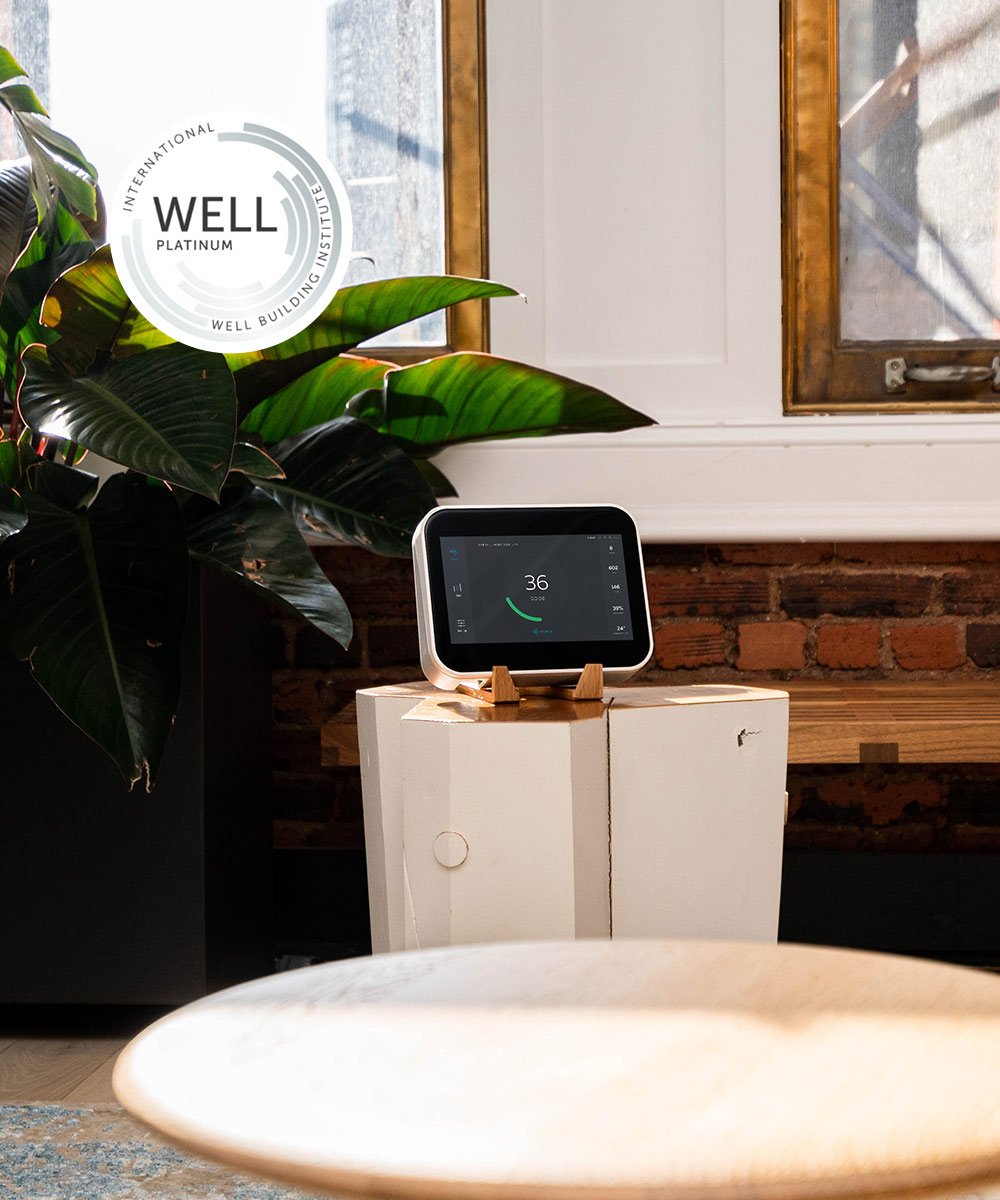
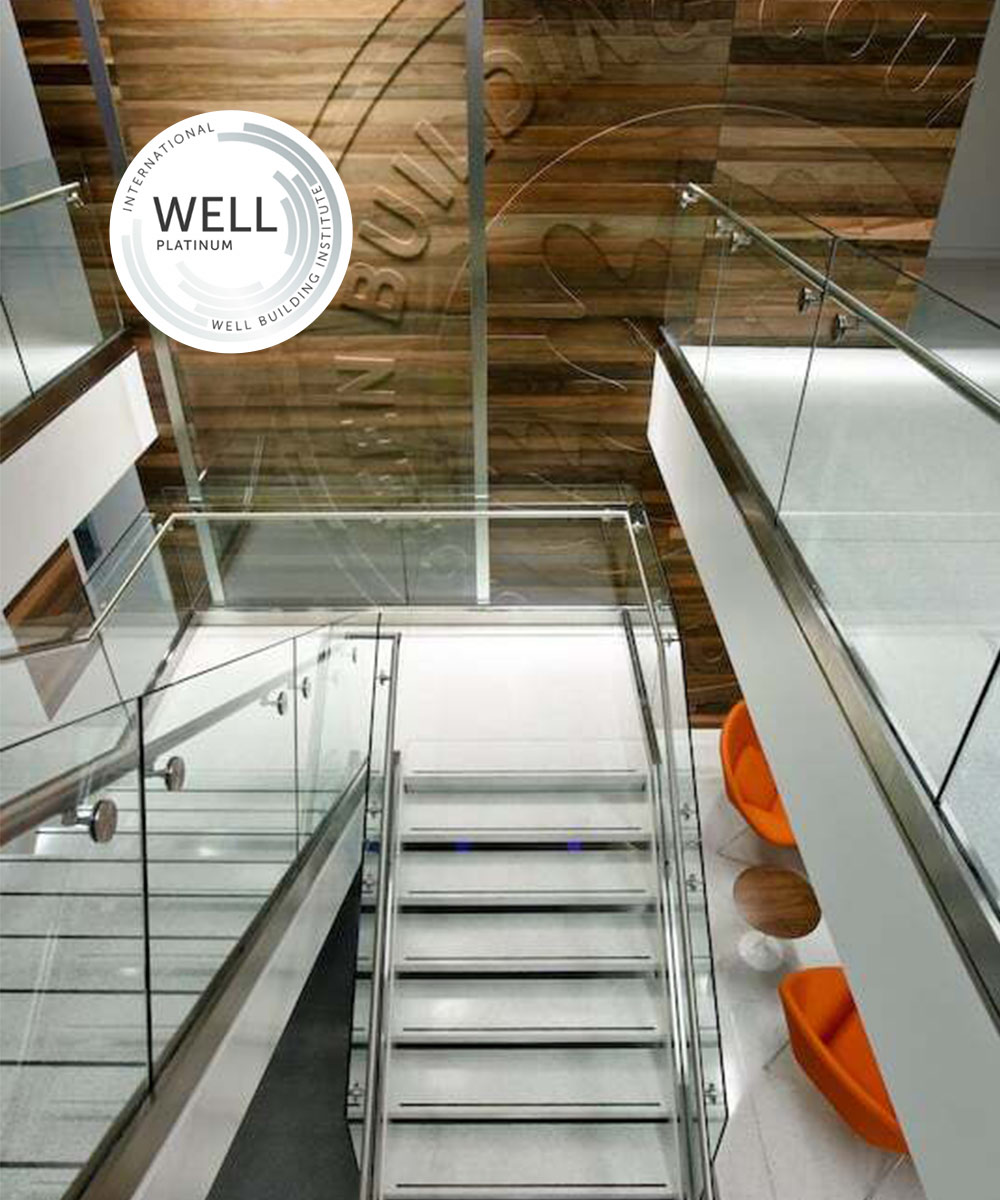

Why F500 companies choose Kaiterra
Frequently asked questions
All of Kaiterra’s monitors are RESET-Certified Grade B devices and meet all the technical requirements for pursuing WELL Certification through continuous monitoring pathways.
Additionally, the Sensedge Mini and Sensedge Go are a part of the Works with Well Catalog, having demonstrated alignment with four strategies within the WELL Building Standard.
The number of air quality monitors you need will, of course, depend on the specific requirements of your project. For projects to meet certification requirements, WELL monitor density guidelines are broken down into the following tiers, and must be met according to occupiable space:
- Projects with occupiable space of < 3250 m²: 1 monitor per 325 m² [3,500 ft² ] in occupiable spaces (minimum 2)
- Projects with occupiable space of 3250-25,000 m²: 1 monitor per 500 m² [5,400 ft²] in occupiable spaces (minimum 10)
- Projects with occupiable space of > 25,000 m²: 1 monitor per 1000 m² [10,800 ft² ] in
- occupiable spaces (minimum 50)
Monitor placement should reflect the occupants’ experience of indoor air quality, typically mounted on a wall within the “breathing zone,” 3 to 6 feet above the floor.
It’s often recommended to install air quality monitors in open spaces and rooms that are regularly occupied. Monitors must be placed throughout the project and should be representative of all HVAC zones, building faces, and frequently used areas like lobbies, open and private office areas, and conference rooms.
Looking to spec Kaiterra devices into your project?
Download our sample specification template to make specifying Kaiterra monitors in your next project seamless.





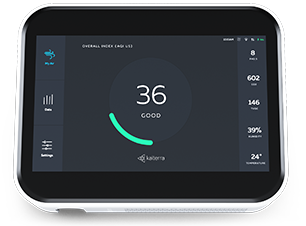
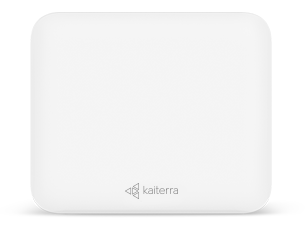
.png?width=306&height=226&name=Menu%20C%20(2).png)
.png)
